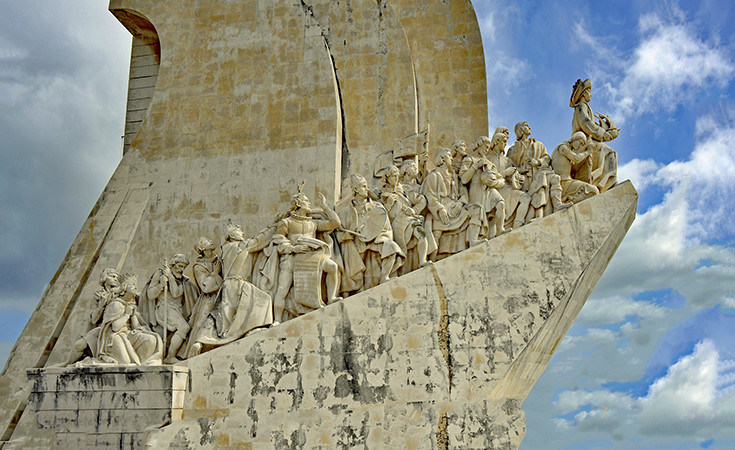
On the river Tagus there is a monument dedicated to Portuguese discoveries and the time when Portugal became famous for numerous discoveries and researches, which took place in the 15th and 16th centuries. From this place where the monument is located today, more than 300 years ago, Portuguese ships went to trade and explore the world. The monument was built as a temporary building for the needs of the exhibition in 1940, and it was demolished in 1943. Only after about 15 years, between 1958 and 1960, the same monument was built, but this time it was never demolished again.
The new old monument is built of cement and pink stone with statues made of limestone. Like most installations and monuments of that time, this monument was built to mark the 100th anniversary of the death of Henry the Navigator. The monument has the shape of a boat that the Portuguese used in their research, and on the monument itself there are as many as 33 statues, which show Portuguese scientists, researchers, cartographers, sailors ...
Each of these 33 figures is shown moving towards the "unknown sea" and thus symbolizes all Portuguese discoveries and research. It is possible to observe the city from the top of the monument. The monument consists of 3 parts, i.e. 2 halls for exhibitions that are often organized here, a space intended as a lookout, which can accommodate as many as 100 people, and a hall where various film screenings are shown. Stairs and an elevator lead to the top of the monument. The view from the monument on the river Tagus is one of the most beautiful in Lisbon.
Of the 33 statues on the monument, the main statue is dedicated to the explorer Henry the Navigator, who is shown here holding a model of a karake - Portuguese research ship. Some of the statues on the monument are: Bartolomeo Diaz, Estevao da Gama, Pedro Escobar, Gil Earnes, Alfonso V, Vasco da Gama... Some of the inscriptions on this monument read: "To Prince Henry and the Portuguese who discovered the ways of the sea."
In front of the monument there is a square or a large plateau, which is made of black, red and rosy plates in the shape of a compass. This square is a gift from South Africa to city. On this compass square you can see (also made of tiles) a map of all the discoveries of Portuguese ships and the routes they sailed. In the background of the square is the monastery of St. Jerome.
 Ticket price for the monument dedicated to Portuguese discoveries
Ticket price for the monument dedicated to Portuguese discoveries
Regular ticket price with landscape and a movie 6 euros
Reduced ticket price: 5 euros - for older then 65 years
Reduced ticket price: 3 euros for children from 13 to 18 years
If an exhibition is organized inside the monument, an additional fee is paid for its tour, from 1.50 euros to 2.50 euro
Children up to 12 years-free entrance.
 Working hours of the monument dedicated to Portuguese discoveries
Working hours of the monument dedicated to Portuguese discoveries
every day from11 a.m to 18 p.m.
Closed on Mondays
Author of the text:

Maja Glavaš, Bachelor with Honours in Communicology. Works in Tourism.
Contact: [email protected]; instagram: travel_europe1